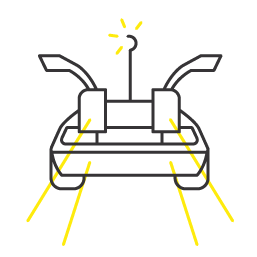The shift to remote work has become increasingly common over the past few years, with many employers offering flexible work-from-home [WFH] options.
Throughout the Covid pandemic, the Australian Taxation Office [ATO] allowed individuals to use the temporary 80 cents per hour shortcut method deduction for WFH tax purposes, but unfortunately, this has come to an end.
Instead, the ATO has now implemented changes to WFH tax deductions which require more onerous record-keeping. So to help, I’ve unpacked below what these changes mean for individuals.
overview of the new ATO method: the revised fixed-rate method
On 1 July 2022, the ATO introduced a revised fixed-rate method of 67 cents per hour, replacing the previous fixed-rate method of 52 cents per hour and the temporary 80 cents per hour shortcut method.
From 1 March 2023, individuals must keep records of the actual number of hours they worked from home. They cannot rely on estimates or 4-week representative diaries.
These records can be in any form including timesheets, rosters and logs of time an individual has spent accessing their employer’s business systems. However, they must be recorded as they occur.
Additionally, records must be kept of expenses they have incurred which are covered by the fixed rate per hour method. For example, if an individual uses their mobile phone and internet while working from home, they are required to keep one bill for each expense.
Failure to keep adequate documentation to support a WFH deduction may result in the deduction being denied.
Given the new record-keeping requirements are significantly more time-consuming, individuals may prefer to use the ‘actual cost’ method.
key points to remember with the revised ‘fixed rate’ method
- The revised fixed-rate method covers internet, mobile, home phone, stationery, computer consumables, and energy expenses related to working from home.
- Individuals cannot claim additional separate deductions for anything covered under the fixed-rate method.
- They can still calculate separate deductions for the depreciation of assets used when working from home such as computers, stand-up desks or ergonomic chairs.
- They can claim costs associated with repairs and maintenance of these assets.
- They can claim costs associated with cleaning a dedicated office.
- They are not required to have dedicated home office space to claim working-from-home expenses.
is the actual cost or revised fixed-rate method better?
When individuals are deciding between the actual cost method and the revised fixed-rate method, they should consider the potential tax savings each option will give them.
Fortunately, the actual cost method has not changed. They can continue to claim the actual work-related portion of expenses. However, like the revised fixed-rate method, the record-keeping requirements are not simple.
While the actual cost method requires more record-keeping, it could result in greater tax savings. While neither option is as attractive as the previous shortcut method, each is worth exploring to help maximise an individual’s deductions.
we’re here to help
If you are wondering how to best maximise your WFH deductions, we are here to help. Contact our accounting team at oneplace@businessdepot.com.au or give us a buzz on 1300 BDEPOT.
subscribe for more accounting insights
If you liked this post and want to get more information regarding all things tax and accounting, you can sign up to our mailing list right here!



















































